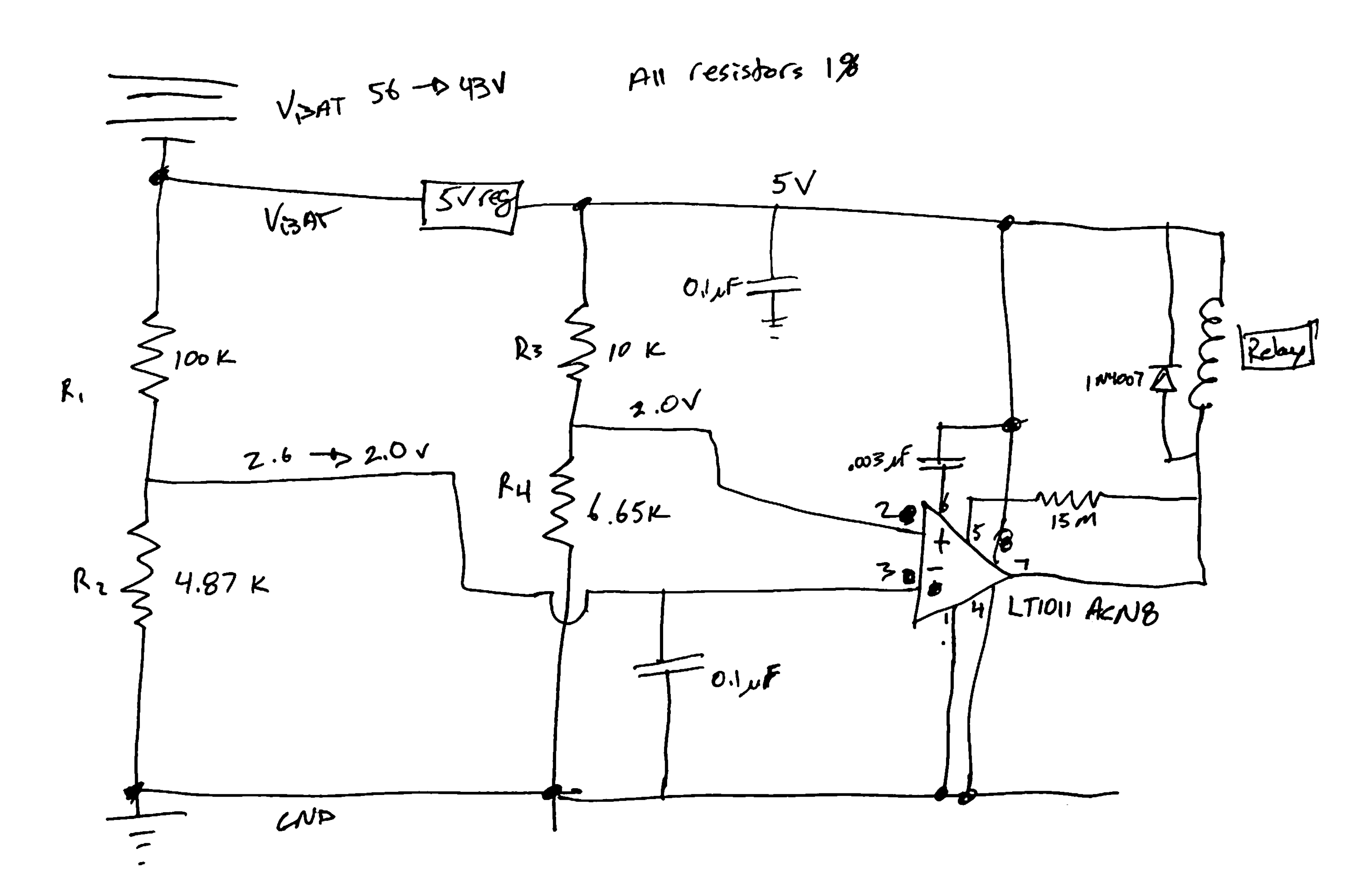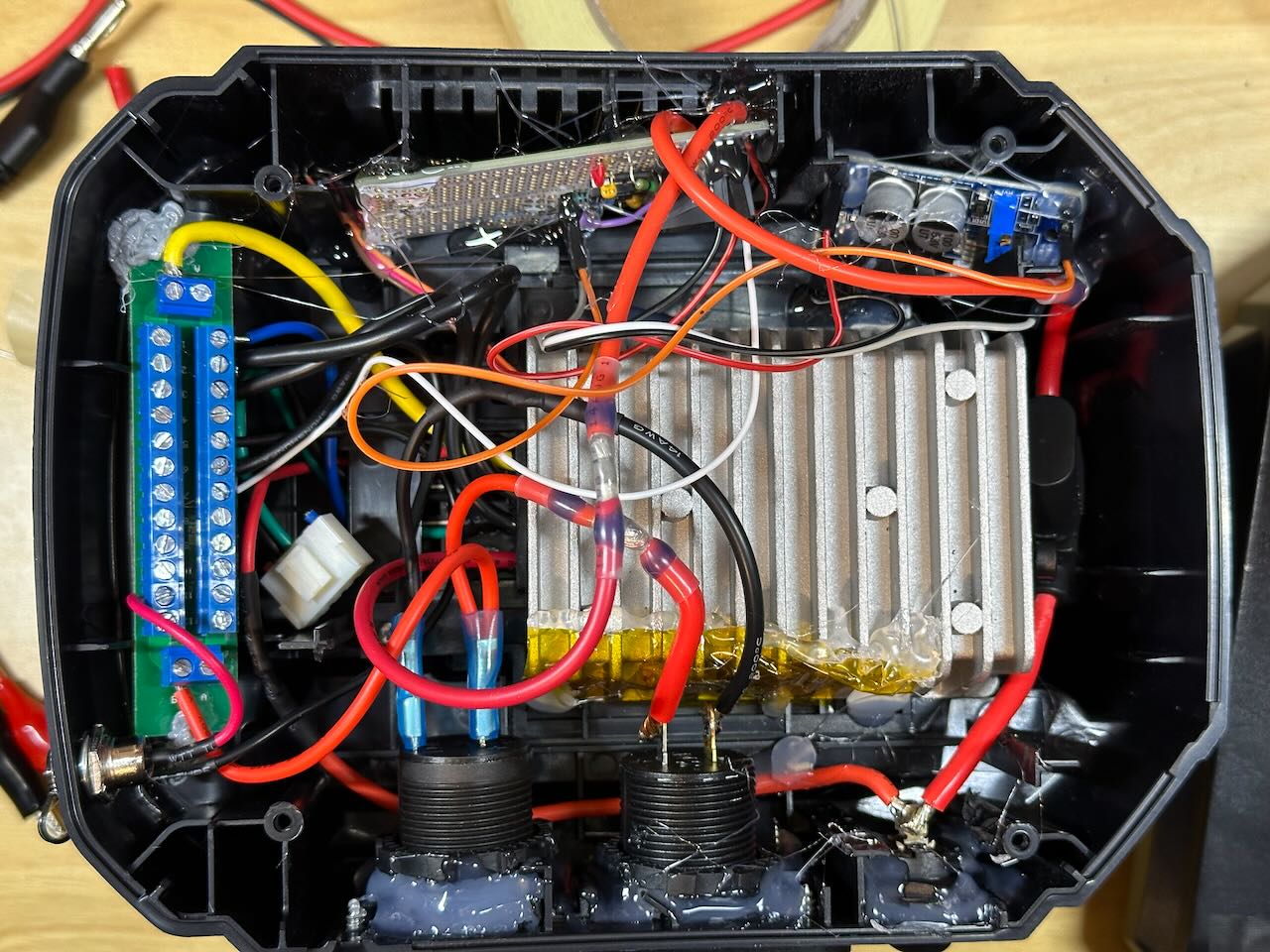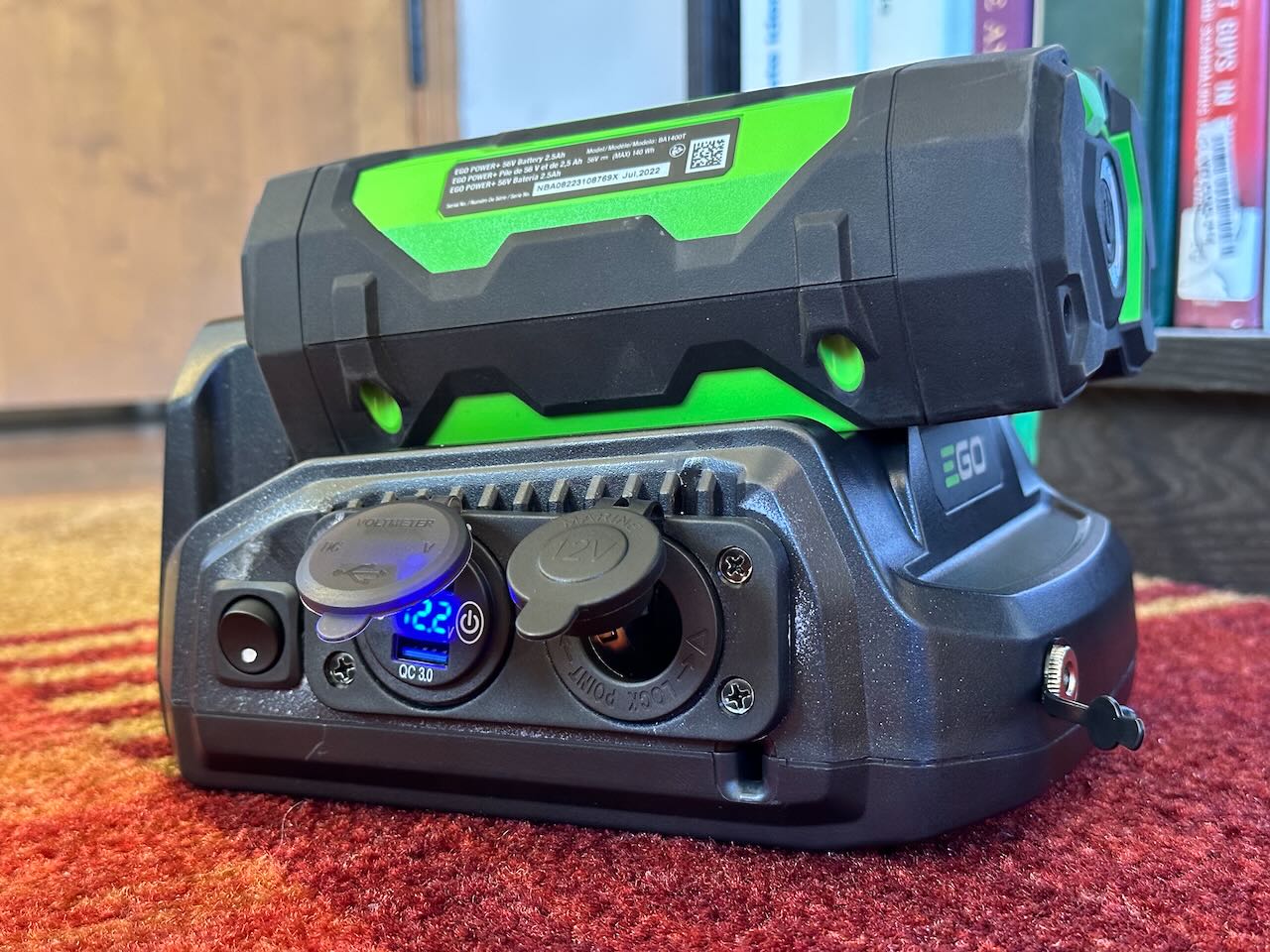The 12v portable power supply Ego needs to make
Part of the Project Logs series.
I'm fully invested in the Ego line of power tools for everything from my lawnmower to hedge trimmer. I also have a need for a portable, long-lasting, rechargeable, power-outage-resistant, 12 volt power supply.[1] Ego sells several inverters/converters, but they all output 110 VAC and/or 5 VDC[2] USB; none of them have a 12 volt accessory power outlet.
So I set out to build an Ego-battery-powered 12 volt power supply. I was inspired by this Instructable project, but that design has some issues I wanted to rectify:
- There's no fuse anywhere to protect against short-circuiting the battery!
- It'll happily draw from the battery forever instead of shutting off when the battery voltage drops too far. As I understand it, it's up to each Ego tool to monitor the battery's voltage and shut off when the battery gets too low.
- In addition to the 12v accessory outlet and USB outputs, I planned to add a 5.5x2.1 output jack.
This is not a complete guide, and I don't have progress photos to share, but I wanted to blog something about this project.
I started by putting together the electronics. The most complex part by far was putting together this battery monitoring circuit on a little protoboard. This circuit monitors the Ego battery's voltage and uses a relay to cut off power to the 12v converter when the battery's voltage drops below 43v:

The battery monitoring circuit itself is powered by this step-down converter, which allows efficiently stepping the Ego battery's 56v down to 5v.
After verifying the electronics worked, I moved on to cutting and drilling the required holes in an Ego battery charger enclosure. Working with plastic with a Dremel tool is annoying, slow, smelly, imprecise work, but in this case it was good enough. Reusing an Ego charger enclosure made much more sense than 3D-printing something custom.
With the enclosure prepared, I started putting everything in place. The various parts are secured in place with a combination of nuts & screws, hot glue, and PETG from a 3D printing pen. I added still more hot glue and Kapton tape where I felt it might be helpful to prevent electrical faults in case something (like the heavy 12v converter) comes loose.
Here's what the inside looked like before I added a lot more glue and put the rear cover on:

It's definitely not perfect or elegant, but it works and I'm pretty confident it'll last a long time.
The finished product:

I plan on using this power supply to run, among other things, a ham radio amplifier and (inspired by last month's National Geographic) an infrared floodlight for nighttime wildlife photography. ↩︎
Technically some of them also have USB-C PD support, so not just plain old 5 volts. Still not what I was looking for. Though as I write this it occurs to me I probably should have tried getting 12v from their 400W inverter, which I already own, first. C'est la vie. ↩︎